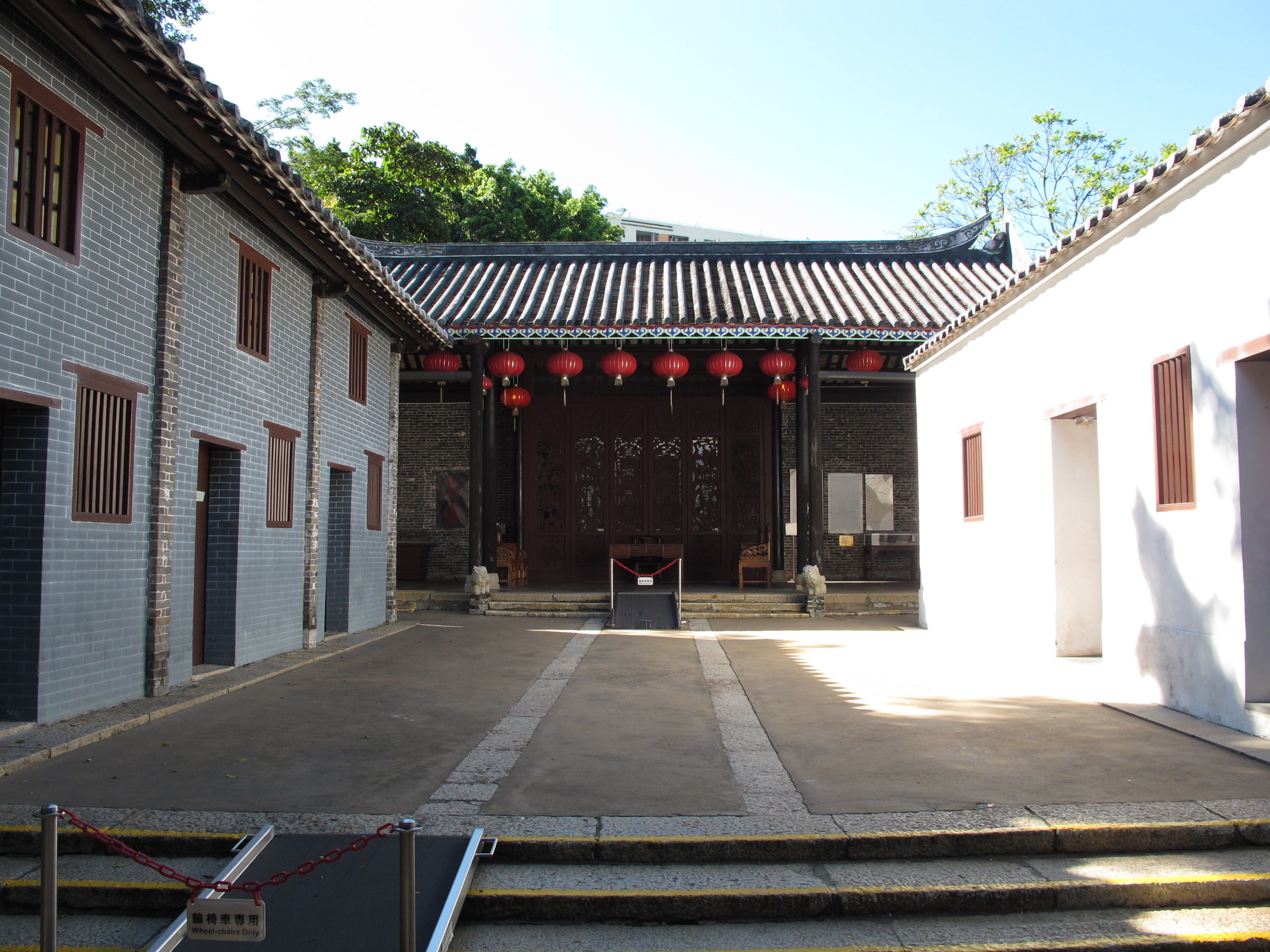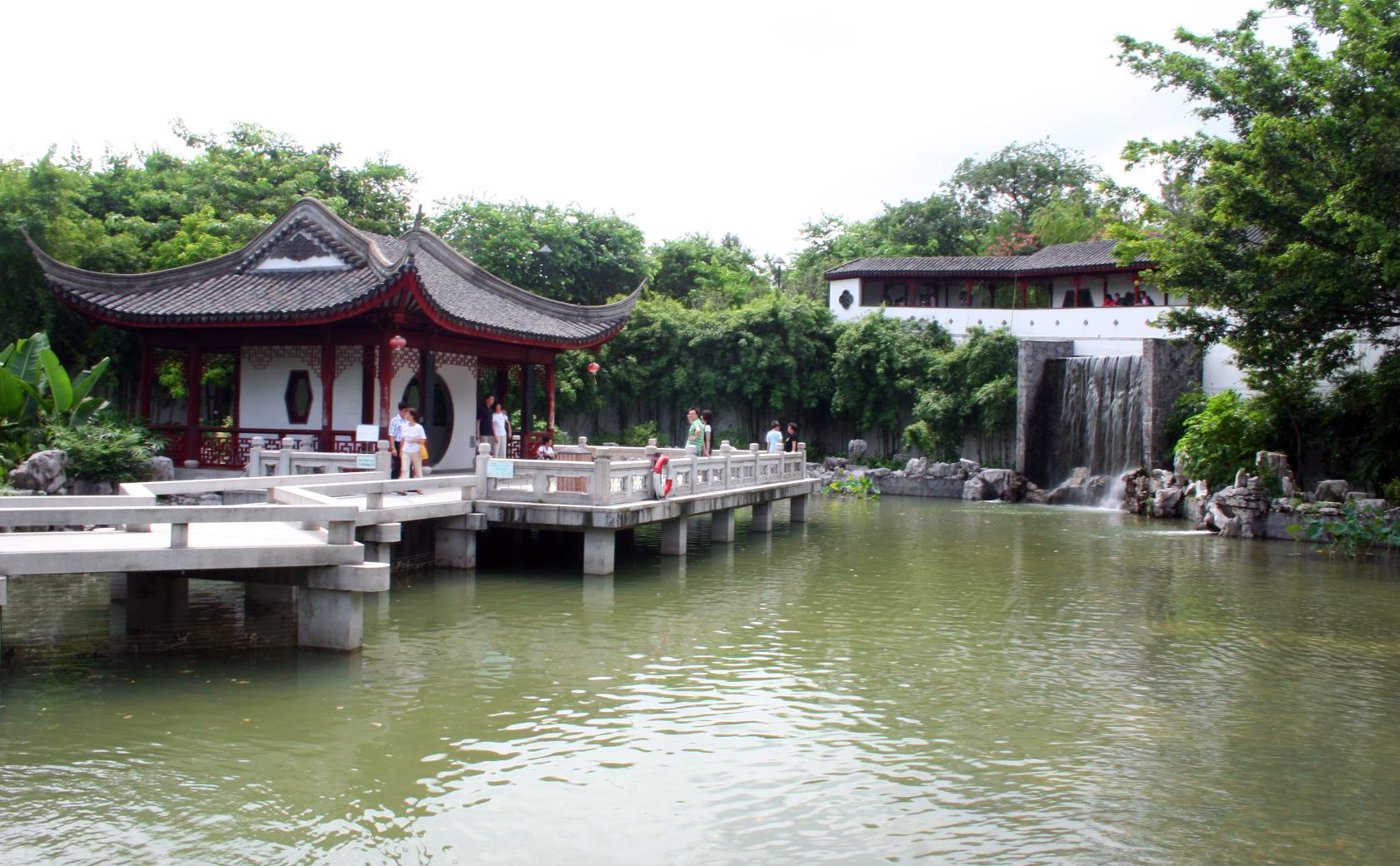Kowloon Walled City Park on:
[Wikipedia]
[Google]
[Amazon]



 The Kowloon Walled City Park is a historical park in
The Kowloon Walled City Park is a historical park in

 The Kowloon Walled City Park is a historical park in
The Kowloon Walled City Park is a historical park in Kowloon City
Kowloon City is an neighbourhood, area in New Kowloon, Hong Kong. It is part of Kowloon City District.
Compared with the council area of Kowloon City District, the Kowloon City area is
History
As early as in the Qin dynasty (221 BCE ...
, Kowloon
Kowloon () is an urban area in Hong Kong comprising the Kowloon Peninsula and New Kowloon. With a population of 2,019,533 and a population density of in 2006, it is the most populous area in Hong Kong, compared with Hong Kong Island and t ...
, Hong Kong
Hong Kong ( (US) or (UK); , ), officially the Hong Kong Special Administrative Region of the People's Republic of China ( abbr. Hong Kong SAR or HKSAR), is a city and special administrative region of China on the eastern Pearl River Delt ...
. The Kowloon Walled City
Kowloon Walled City was an ungoverned and densely populated ''de jure'' Imperial Chinese enclave within the boundaries of Kowloon City, British Hong Kong. Originally a Chinese military fort, the walled city became an enclave after the New Ter ...
had been a military stronghold since the 15th century due to its coastal location and was a centre of vice and crime until 1987. Under the agreement between the Government of Hong Kong
The Government of the Hong Kong Special Administrative Region, commonly known as the Hong Kong Government or HKSAR Government, refers to the executive authorities of Hong Kong SAR. It was formed on 1 July 1997 in accordance with the Sino-Br ...
and the PRC, the Kowloon Walled City was demolished in the 1990s while the indigenous buildings and features were preserved for incorporation in the new park.
The Kowloon Walled City Park is designed as a Jiangnan (江南) garden of the early Qing dynasty
The Qing dynasty ( ), officially the Great Qing,, was a Manchu-led imperial dynasty of China and the last orthodox dynasty in Chinese history. It emerged from the Later Jin dynasty founded by the Jianzhou Jurchens, a Tungusic-speak ...
. The park, 31,000 square metres (7.66 acres) in total, is divided into eight theme zones with their own characteristic scenery, matching with the style of the whole park. The design was awarded a Diploma at the IGO Stuttgart Expo 93 (International Garden Exposition).
History
In the middle of the 19th century, the Qing government started to build an enclave besideKowloon Bay
Kowloon Bay is a body of water within Victoria Harbour and an area within Kowloon, Hong Kong.
The bay is located at the east of the Kowloon Peninsula and north of Hong Kong Island. It is the eastern portion of Victoria Harbour, between ...
, surrounded by stone walls. The Walled City was initially used for military purposes, housing many soldiers and their families. During World War II
World War II or the Second World War, often abbreviated as WWII or WW2, was a world war that lasted from 1939 to 1945. It involved the vast majority of the world's countries—including all of the great powers—forming two opposin ...
, the stone walls were demolished by the Imperial Japanese Army
The was the official ground-based armed force of the Empire of Japan from 1868 to 1945. It was controlled by the Imperial Japanese Army General Staff Office and the Ministry of the Army, both of which were nominally subordinate to the Emperor o ...
. Part of them were buried and well preserved under the soil. By the 1970s, the population of the city had risen to 41,000. The number of buildings was 503 in 1994. By that time, the British colonial government found it increasingly difficult to manage and control the serious crime in the area related to drugs, illegal gambling, prostitution and quackery
Quackery, often synonymous with health fraud, is the promotion of fraudulent or ignorant medical practices. A quack is a "fraudulent or ignorant pretender to medical skill" or "a person who pretends, professionally or publicly, to have skill, ...
. As well, domestic factories, including textile, candy-making and production of jook-sing noodles, were situated in the area. After the Sino-British Joint Declaration
The Sino-British Joint Declaration is a treaty between the governments of the United Kingdom and China signed in 1984 setting the conditions in which Hong Kong was transferred to Chinese control and for the governance of the territory after ...
in 1984, Britain and China embarked on a discussion about solving the problems in the Walled City, and subsequently announced the demolition of the City on 14 January 1987. Between 1987 and 1989, residents were resettled, and demolition began in 1993.
By 1995, the site had been transformed into a park for nearby residents. Due to its proximity to the Kai Tak Airport
Kai Tak Airport was the international airport of Hong Kong from 1925 until 1998. Officially known as Hong Kong International Airport from 1954 to 6 July 1998, it is often referred to as Hong Kong International Airport, Kai Tak, or simply Ka ...
, and so that the park could have a more open view, regulation of the height of buildings was strictly enforced.
Featured facilities
The park consists mainly of eight landscape features: the ''Yamen
A ''yamen'' (''ya-men''; ; Manchu: ''yamun'') was the administrative office or residence of a local bureaucrat or mandarin in imperial China. A ''yamen'' can also be any governmental office or body headed by a mandarin, at any level of govern ...
'' (), Old South Gate (), Eight Floral Walks (), Garden of Four Seasons (), Garden of Chinese Zodiac (), Chess Garden (), Mountain View Pavilion () as well as the Fei Sing Pavilion () and Guibi Rock ().
The ''Yamen'' () is located in the centre of the Park and it is the only remaining old Qing building. It was built in 1847 and its interior was dominated by the offices of the Commodore of the Dapeng Brigade () and the Kowloon Assistant Military Inspectorate (). It was designed with three rows and four wings of houses. Its walls and column bases are built from bricks and granite, while the roof is a traditional structure covered with cylindrical and flat tiles. After 1899, the ''Yamen'' was used for charitable purposes like home for the elderly named Almshouse. It is now officially classified as a declared monument in Hong Kong. Six exhibition rooms are housed inside.
The original site of South Gate () has been designated as a declared monument and all related relics unearthed have been preserved. Flagstone pavement, cornerstones of the buildings, and a drain were discovered. Also, two granite plaques with Chinese characters for "South Gate" and "Kowloon Walled City
Kowloon Walled City was an ungoverned and densely populated ''de jure'' Imperial Chinese enclave within the boundaries of Kowloon City, British Hong Kong. Originally a Chinese military fort, the walled city became an enclave after the New Ter ...
" were unearthed at the site of the original South Gate when the Walled City was torn down in 1994.
The Garden features 12 Chinese zodiac
The Chinese zodiac is a traditional classification scheme based on the lunar calendar that assigns an animal and its reputed attributes to each year in a repeating twelve-year cycle. Originating from China, the zodiac and its variations remain ...
sculptures. They are arranged according to the Heavenly Stems (''Tiangan'' 天干) and Earthly Branches (''Dizhi'' 地支) in Chinese astrology
Chinese astrology is based on the traditional astronomy and calendars. Chinese astrology came to flourish during the Han Dynasty (2nd century BC to 2nd century AD).
Chinese astrology has a close relation with Chinese philosophy (theory of the t ...
.
The Guibi Rock was carved from Taihu stone
Taihu stone () or porous stone is a kind of limestone produced at the foot of Dongting Mountain () in Suzhou, which is close to Lake Tai. Due to long-term surging by water, this kind of stone features pores and holes.
These stones are very popula ...
. It is named Guibi because its veins are similar to those of ancient jade. Fui Sing Pavilion symbolises a constellation of literature and wisdom. Guibi Rock also symbolises the hope of returning Hong Kong to China.
The Mountain View Pavilion provides a fine distant view of the Lion Rock, which resembles a lion sitting with its head facing the Pavilion.
There are four large chessboards built on the ground with pebbles for visitors to enjoy a game of chess.
The Eight Floral Walks is a web of paths which connects the distinct landscape features of the Park. Various types of flowers that bloom in different seasons are planted on both sides of the path to accentuate the scenery of the park in all seasons.
Located to the west of ''Yamen'', the Kwong Yam Square is a garden where flowers of the four seasons could be seen.
This exhibition was officially opened for public use on 19 April 2009. It consists of one outdoor display area and six exhibition rooms inside the former ''Yamen''.
The outdoor display area is located near the South Gate which shows a tablet and a model of the Kowloon Walled City. The front of the tablet has an introductory article inscribed whereas the back presents the cross-section of the pre-demolished Kowloon Walled City and the depiction of the daily lives of its residents. Behind the tablet stands a bronze miniature model of the Walled City which allowed the visitors touch and have a closer look at the City.
Six exhibition rooms are located inside the ''Yamen'' which illustrate the living environment inside the Walled City through interactive imagery and sound.
References
External links
* {{Kowloon City District 1995 establishments in Hong Kong Declared monuments of Hong Kong Kowloon City Urban public parks and gardens in Hong Kong